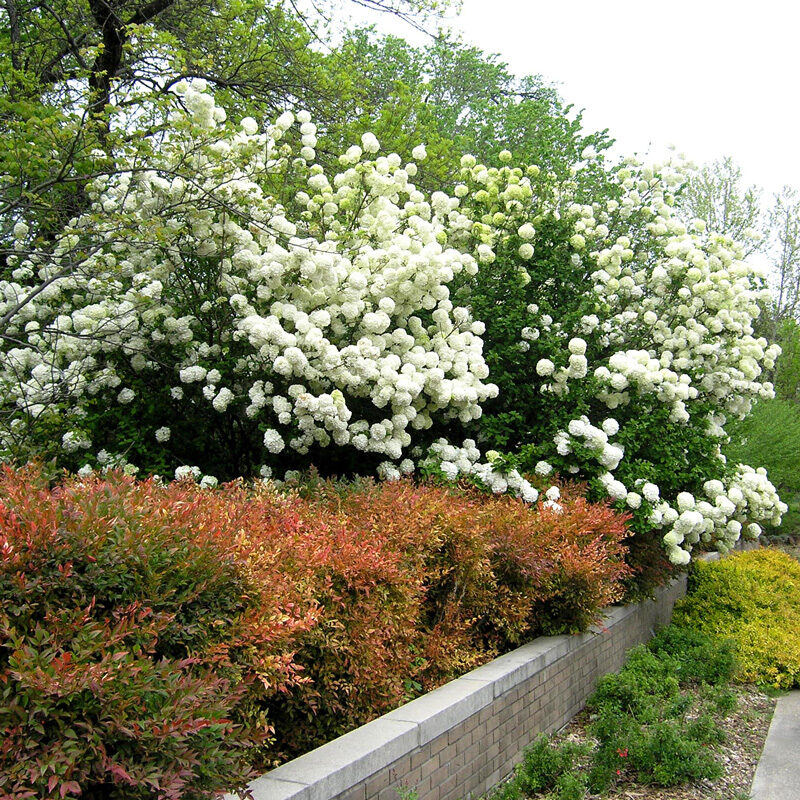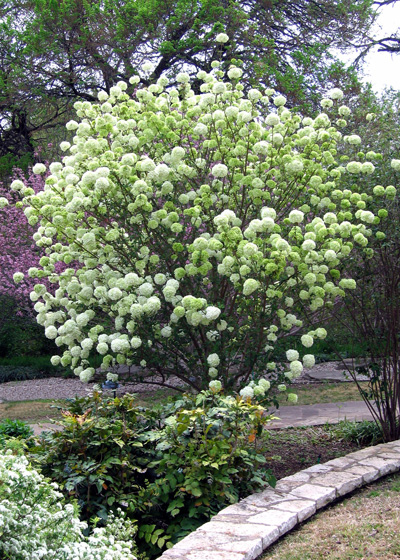Showy Spring Snowball by Steve Huddleston
You’ll see Chinese snowballs in bloom right now in older neighborhoods of the eastern half of Texas, also in newer developments where landscape designers know its potential for a stunning spring show.

The details…
• Scientific name: Viburnum macrocephalum, with the species name meaning “large head”
• Common name: Chinese snowball, referring to plant’s native home and fact that floral heads resemble snowballs.
• Adapted to USDA Hardiness Zones 6a-9b (will survive anywhere in Texas).
• Mature height: 8-20 ft.
• Mature width: 10-20 ft.
• Deciduous
• Growth form: Vase-shaped, with multiple trunks
• Can be used as large shrub, but can also be trained tree form by removing weaker lower branches and focusing on three or five major trunks.
• Bloom time: mid-March into mid-April, depending on locale. The flower heads emerge lime green, then turn white. Heads grow to be up to 6-8 inches in diameter.

• Flower heads are sterile, so no seedlings to worry about, although flowers still attract bees and butterflies.
• Soil preference: Moist (but well drained), acidic (but tolerant of most pHs).
• Sun exposure: Full to part sun (as little as 2 to 6 hours of sunlight daily)
• Insect, disease problems: None of consequence.
• Use in combination with: Other spring-flowering plants such as redbud, Mexican buckeye, azaleas and forsythia.

You might have to do a little searching to find a nursery that sells this shrub. Once you find a source, though, you’ve found an absolute treasure that you and passersby will enjoy for years to come.
Suggestion: If you don’t have any more room for a Chinese snowball in your landscape, do what I did: ask your neighbor if you can plant one just over the property line on his property!
